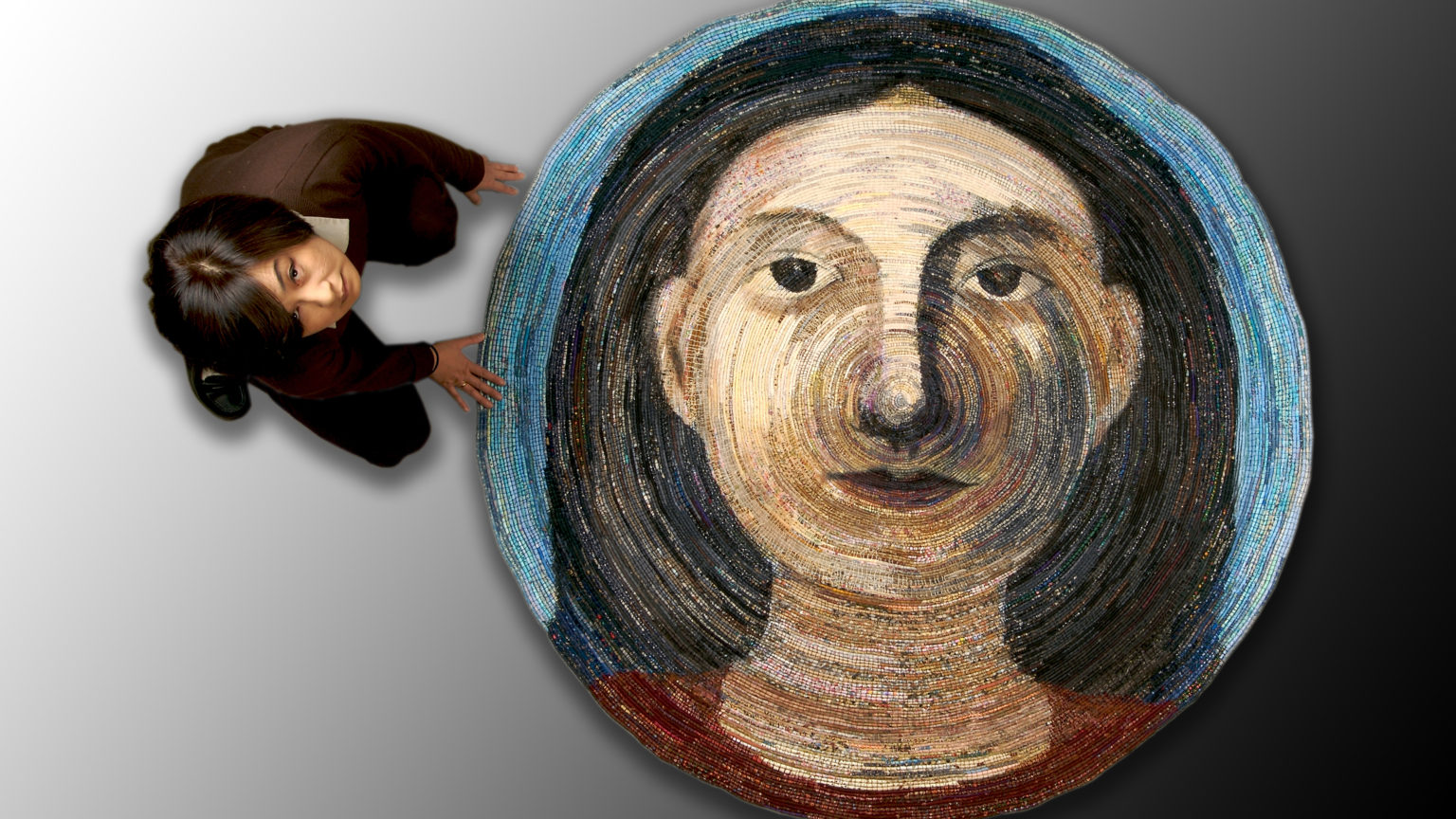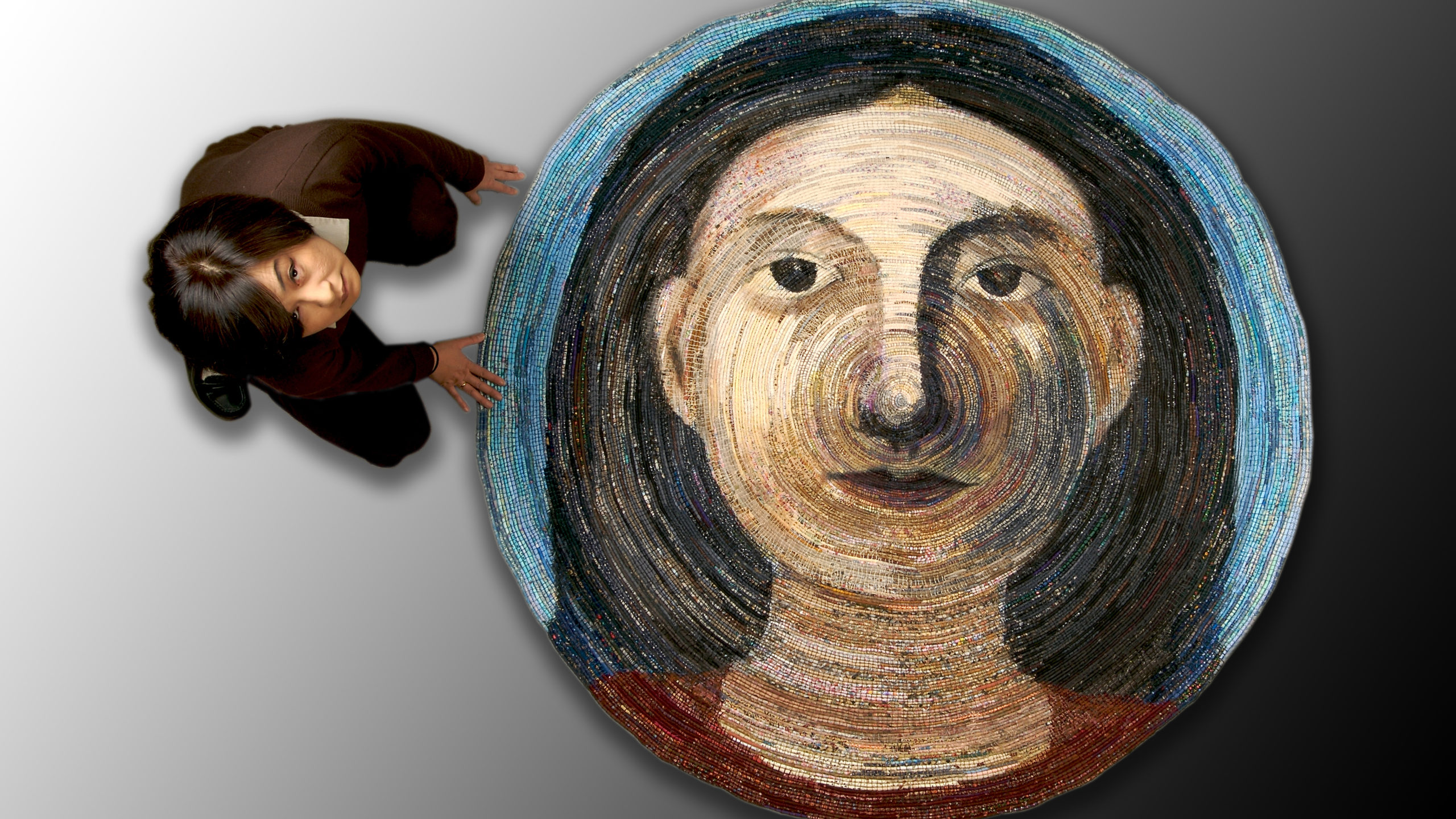
In her poem “Human Family,” Maya Angelou explores the connections between people around the globe, and ultimately concludes that “we are more alike, my friends, than we are unalike.”
Inspired by this idea, I have created a series of pieces that further probe this theme of interconnectedness between peoples of the world. A series of works in the exhibit have been created with one idea in mind: all of humanity constitutes one family, a family unified despite its vastness.
The first step in creating this series was to make portraits of my immediate family, a microcosm within a macrocosm. Using “yo-yos” (rosettes created by sewing the edges of a circular piece of cloth and gathering at the center) as the building blocks of each, I formed likenesses of my immediate and extended family members. The family portraits also include “Esubalew,” six-year-old boy in Ethiopia, whom my family has supported through Compassion International. In a symbolic effort to expand the boundary of family, I added the portraits of the victims of human tragedies. September 11, which contains 1,910 ballpoint ink portraits of people whose lives were destroyed on September 11, expresses my deepest sympathy for the victims. Eve, the Mother of All Living also reflects the sympathy I felt for mothers who lost their child.
Another series of works depict the marginalized and forgotten people who have remained voiceless, faceless, and nameless. The plight of the Asian “comfort women” who were forcibly removed from their homes to serve as sex slaves in Japanese military camp during the World War II is an unsung tale. Comfort Woman, a series of portraits of high school girls in the shape of a ceremonial kimono, is intended to be a universal reminder of what happens when we lose our humanity and forget what unites us. Behind the Labels is made of about three thousands of labels I have collected from my own family’s clothing over the past 20 years. The beautiful clothing is the result of sweat of garment workers and various abuses such as low wages, lack of rights, and poor working conditions. The label is more than an indicator of the garments’ brand and works; it is also the story of another person’s life and hardships. Imago Dei II or “In the Image of God” is placed at the center of the exhibit floor. These nine quilts surround the image of Christ in the manner of petals extending from a flower. Each round-shape quilt contains a portrait of a great humanitarian of our age who has made significant contributions to furthering peace.

